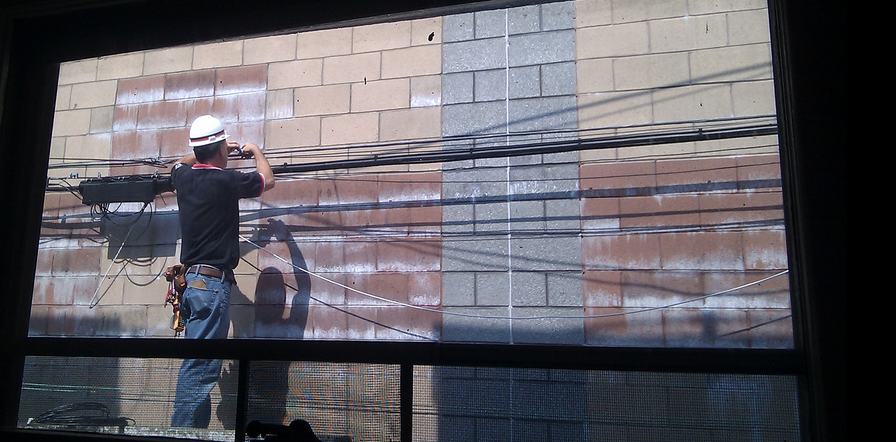Verizon FiOS Gets Benefits Of Being A Public Utility Without The Regulations

(Photo: Damian)
A quick recap for those coming late to this topic. In the stone age of the Internet, the FCC stupidly categorized broadband as a loosely regulated Title I “information service,” rather than labeling it a Title II “telecommunication service,” which gives the commission more regulatory authority. In 2010, the FCC established the Open Internet Rule (aka net neutrality), which stated that ISPs couldn’t slow down, block, or prioritize any data based on its source, content, or destination.
This also meant that Verizon, et al, could not make money by squeezing deep-pocketed content providers for better access. The ISPs don’t like not being able to nickel/dime at every opportunity, so they sued, successfully arguing to a federal appeals court that the current “information service” classification of broadband means the FCC can’t enact such tough regulations.
Recently installed FCC Chair Tom Wheeler (a former frontman for both the cable and wireless industries) recently introduced his new, controversial attempt at reinstating net neutrality. It would allow ISPs to charge content providers for improved access, but it also leaves open the door to the idea of reclassifying broadband as a telecommunications service.
This hasn’t gone over well with Verizon and its cronies, who are have lobbyist spreading industry-approved cow dung all over D.C., arguing that reclassifying broadband would put poor little ISPs like Verizon in a position where they couldn’t do all that innovating (that they don’t actually do).
But while Verizon is trying to convince people how important it is that broadband remain only mildly regulated, a new report [PDF] highlights some of the ways in which Verizon FiOS has benefited from perks afforded only to public utilities like landline service.
See, while Verizon FiOS, as an ISP, is considered a Title I service, Verizon’s franchise deals with municipalities around the country explicitly call out Verizon’s fiber-to-the-premises (FTTP) network that carries FiOS as a Title II service; the same as landline telephone service.
“Verizon’s New York City’s current cable franchise, as well as the franchises for other Verizon franchises in other states, from DC to New Jersey — all detail that at the core of Verizon’s cable, Internet, and broadband networks is a ‘Title II’, common carriage, telecommunications service,” reads the report. “And it appears this was done for two reasons — it gets all of the powers of the utility, including the rights-of-way that are part of the telecommunications utility service, but it also may charge the copper-based POTS [plain old telephone service] utility customers for the development and deployment of FiOS.”
So Verizon has been able to pay for the rollout (however slow and stalled it may be) of FiOS with the help of its landline customers, and it’s claimed its authority for connecting that FiOS network to consumers’ homes, under Title II. But it doesn’t want the FCC treating the service that it delivers through that network to be treated that way.
None of this is illegal, and sadly it’s standard practice in the cable, telecom, and wireless industries. For example, on a smartphone, the voice and texting services are Title II while your data is Title I. The cable connection coming to your house brings data (Title I) and pay-TV (Title VI) and maybe VoIP phone service, which is currently unclassified.
What it does show is the hypocrisy of these industries, as they use whichever classification provides them the most benefit, regardless of whether or not that label holds true.
“The wireless carriers are all big on using this Title II stuff when it comes to things like getting the FCC to preempt states on tower siting and… the use of phone numbers and mandatory interconnections with landline [networks] and all that good stuff,” Harold Feld of Public Knowledge explains to Ars Technica.
It’s been 12 years since the FCC — under the leadership of Michael “Son of Colin” Powell, who now heads the National Cable & Telecommunications Association — knuckled under to pressure from ISPs and classified broadband as Title I. Back then, one could make the argument that Internet access was not an essential utility, as in-home Internet was just beginning to take off with the growth of DSL and cable Internet.
But with the development and rapid adoption of WiFi, connected devices, tablets and smartphones, the Internet has quickly become an irreplaceable leg on which modern culture and industry stand. Just watch what happens when ISP service goes down in an office for even a short time; it’s no longer, “Oh crap, I can’t IM my friends Sally and Mike,” but “Holy sh&$#, I can’t do a single thing until access is restored because every document and application I need is accessed remotely.”
Today’s businesses are now just as reliant on Internet access as they are on electricity and phone service. It’s time for the FCC to recognize this fact and reclassify broadband accordingly.
Click here for more information on how to let the FCC know how you feel about net neutrality.
Want more consumer news? Visit our parent organization, Consumer Reports, for the latest on scams, recalls, and other consumer issues.

